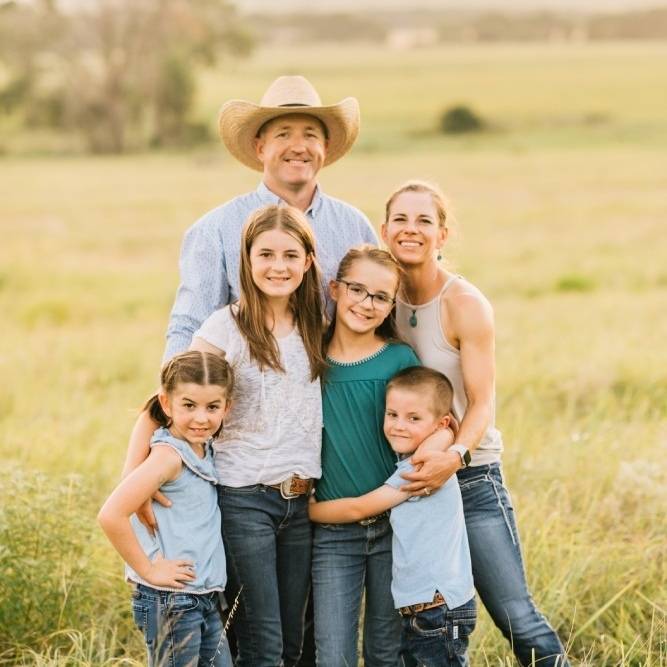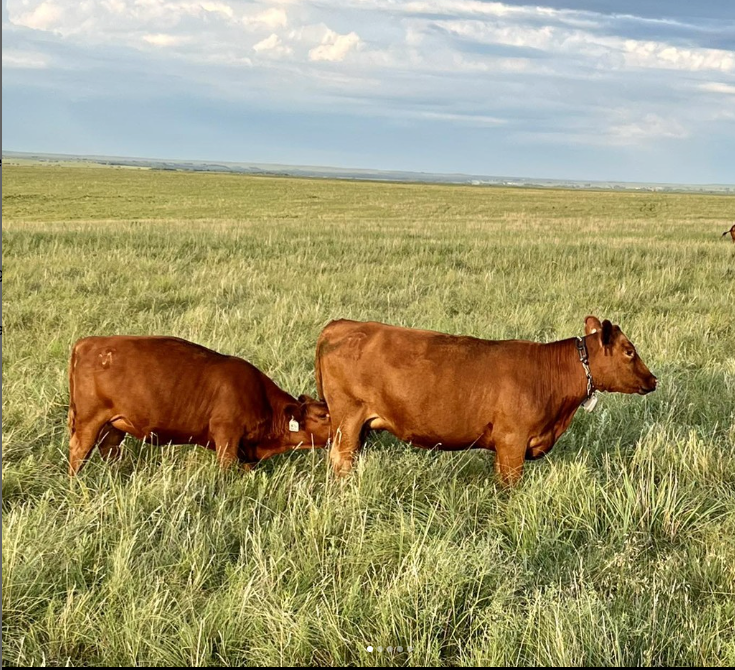A Q&A with carbon credit rancher Daniel Mushrush

We recently caught up with one of the ranchers who is in Grassroots Carbon’s carbon credit rancher program, Daniel Mushrush.

Daniel is the third generation of his family operating the 3,500-acre Mushrush Ranch in central Kansas. They specialize in Red Angus cattle production, with a herd more than 1,650 strong.
Q: Tell us about Mushrush Ranch.
A: Sure, our family-owned Mushrush Ranch has been operating in central Kansas for three generations. We specialize in Red Angus cattle production and manage a herd of about 1,650. Our ranch spans 3,500 acres.
Q: When did you first start implementing regenerative practices at Mushrush Ranch?
A: In 2011, we faced one of the worst droughts in years. It was a dire situation for us, and we had to find a way to combat it. We started practicing rotational grazing out of necessity, allowing certain parts of our land to rest while rotating the cattle. This decision brought some unexpected benefits, like improved cattle health and weight gain.
Q: When did you realize the potential of regenerative agriculture and its benefits?
A : Well, after experiencing the positive outcomes from rotational grazing during the drought, we decided to continue with regenerative practices even after the rain returned. Over the past ten years, we have gradually incorporated more regenerative measures. For example, when farming equipment broke down, instead of replacing it, we converted that pasture into grazing land for the cattle. We also extended our grazing season by implementing perennial pastures with cool-weather grass, which allowed us to graze from March 1 to December instead of just May to October.
Q: What improvements have you observed as a result of these regenerative practices?
A: Our feed costs dropped from $4 per head per day to less than $1. Additionally, our cattle’s average weight increased by 40 pounds, and we observed a 5% improvement in breed up. Moreover, we noticed a considerable improvement in animal health. Our reliance on medication treatments decreased dramatically, saving us substantial expenses.

Q: Did you also witness any changes in soil health?
A: Absolutely. The transformation in our soil health has been remarkable. For example, when we acquired a 320-acre field that had been conventionally farmed, the soil was in poor condition with less than 1% organic matter. However, after implementing regenerative practices such as planting perennials and providing a year of rest, the organic matter content increased to 4% or higher. It’s truly amazing to see the difference. Even during heavy rains, our soil structure has improved, and we no longer experience sinking or soil erosion.
Q:: When did you consider selling carbon credits and why?
A:: The idea of selling carbon credits came to my attention in 2020 during the uncertainties of the COVID-19 pandemic. I had been using the PastureMap app to manage our land, and when I learned about the opportunity to earn money for the additional carbon sequestered in our soil through Grassroots Carbon, I was intrigued. I asked myself, “If we’re already implementing these regenerative measures and documenting our progress, why not earn some additional income?”
Q: What were some of your concerns and questions before deciding to sell carbon credits?
A: Selling carbon credits was a new concept for me, and I had a few reservations. I wanted to understand how much I would be paid for the credits and the level of commitment required. I was also curious about the process and the long-term implications for our ranch.
Q: How has the experience been so far, selling carbon credits with Grassroots Carbon?
A : It’s been a positive experience overall. Initially, I had to convince my family members about the benefits of signing the agreement and selling credits with Grassroots Carbon. The measurement process was hassle-free. When we received our first payment, it was a moment of validation. Seeing real money come in from our efforts solidified the value of participating in the carbon credit market. We reinvested some of the income into measures that further enhance carbon sequestration and soil health, such as planting Eastern Gamagrass. Selling carbon credits has given us the nudge we needed to make beneficial long-term decisions for our ranch.
Interested in selling your carbon credits? Find out how.